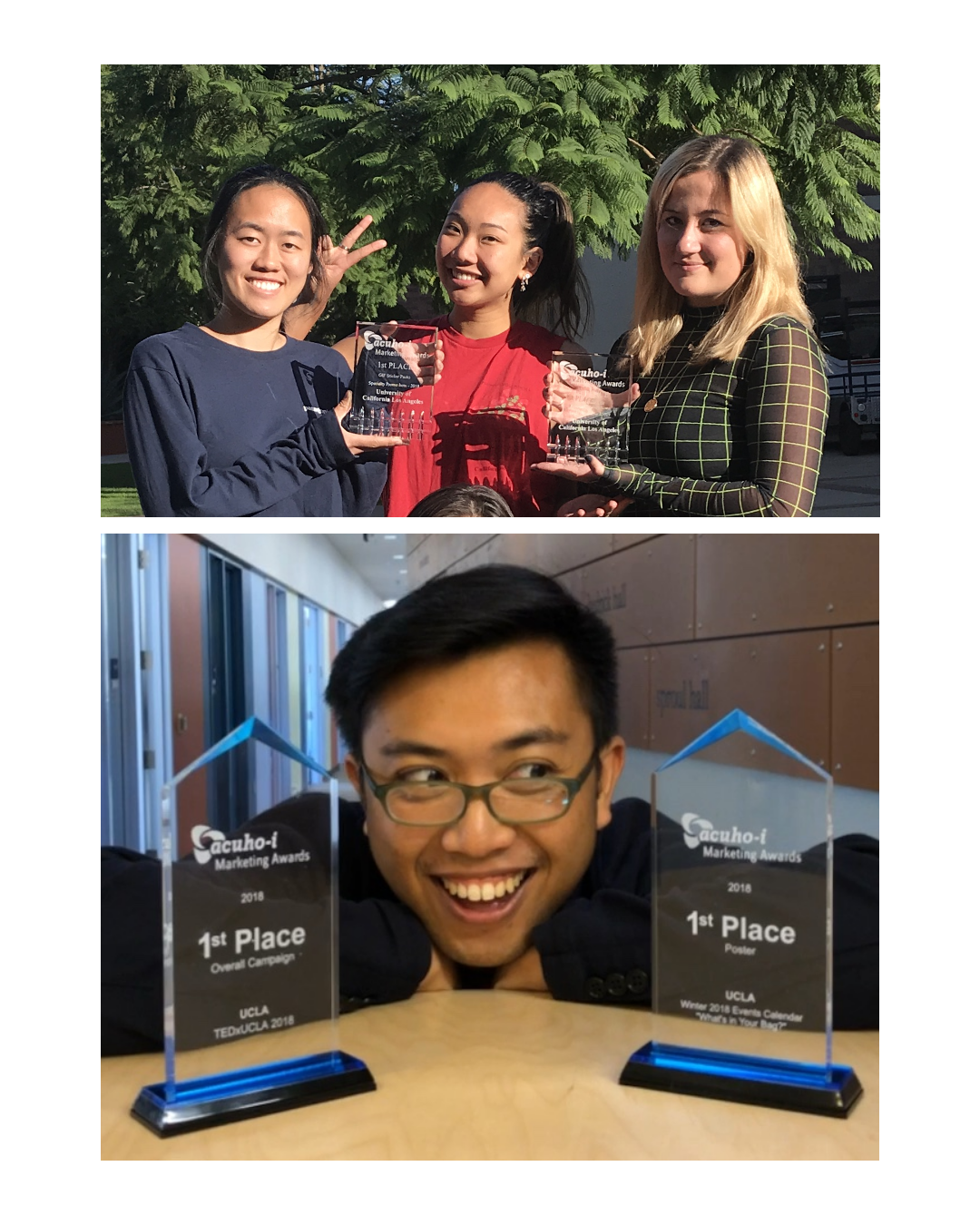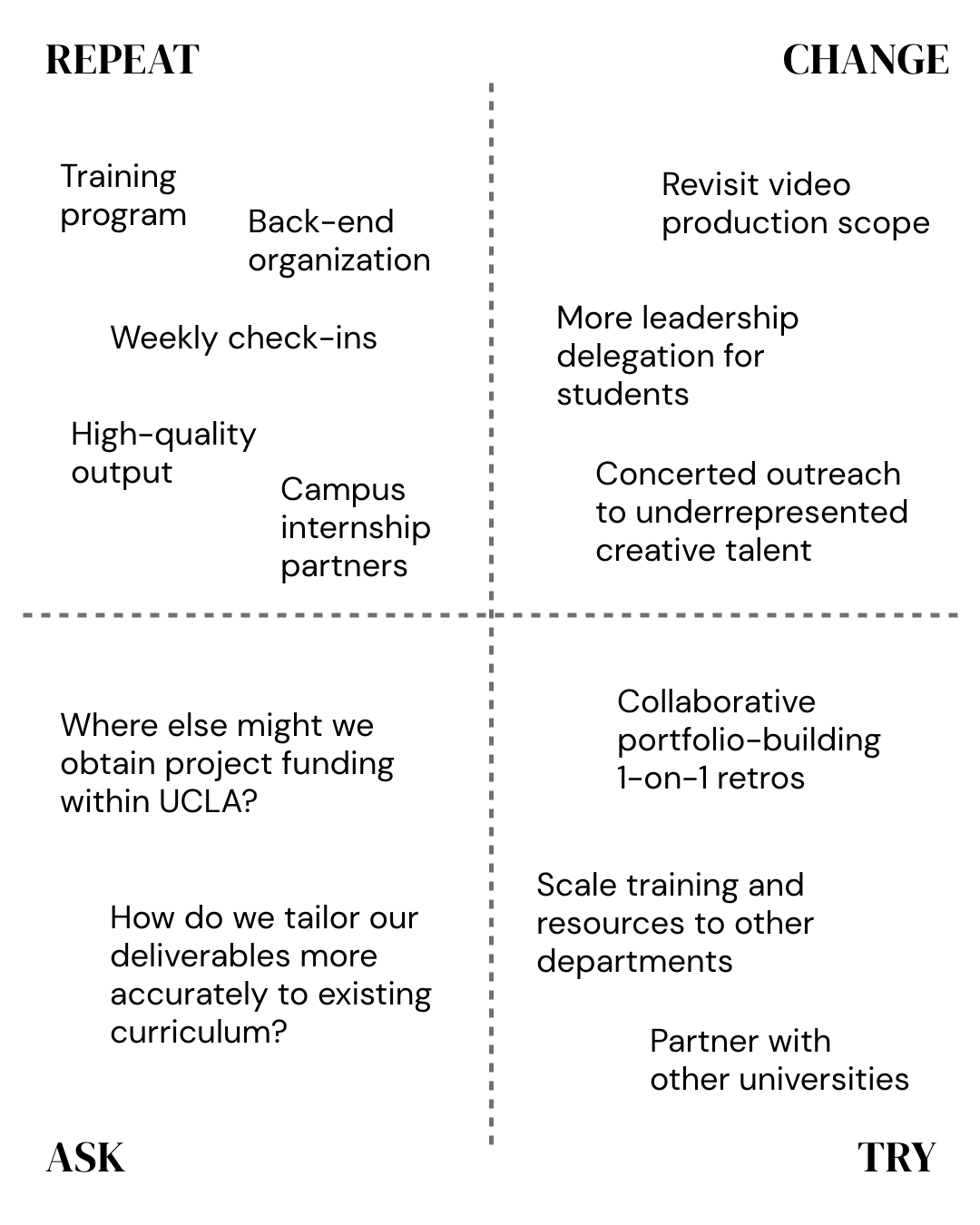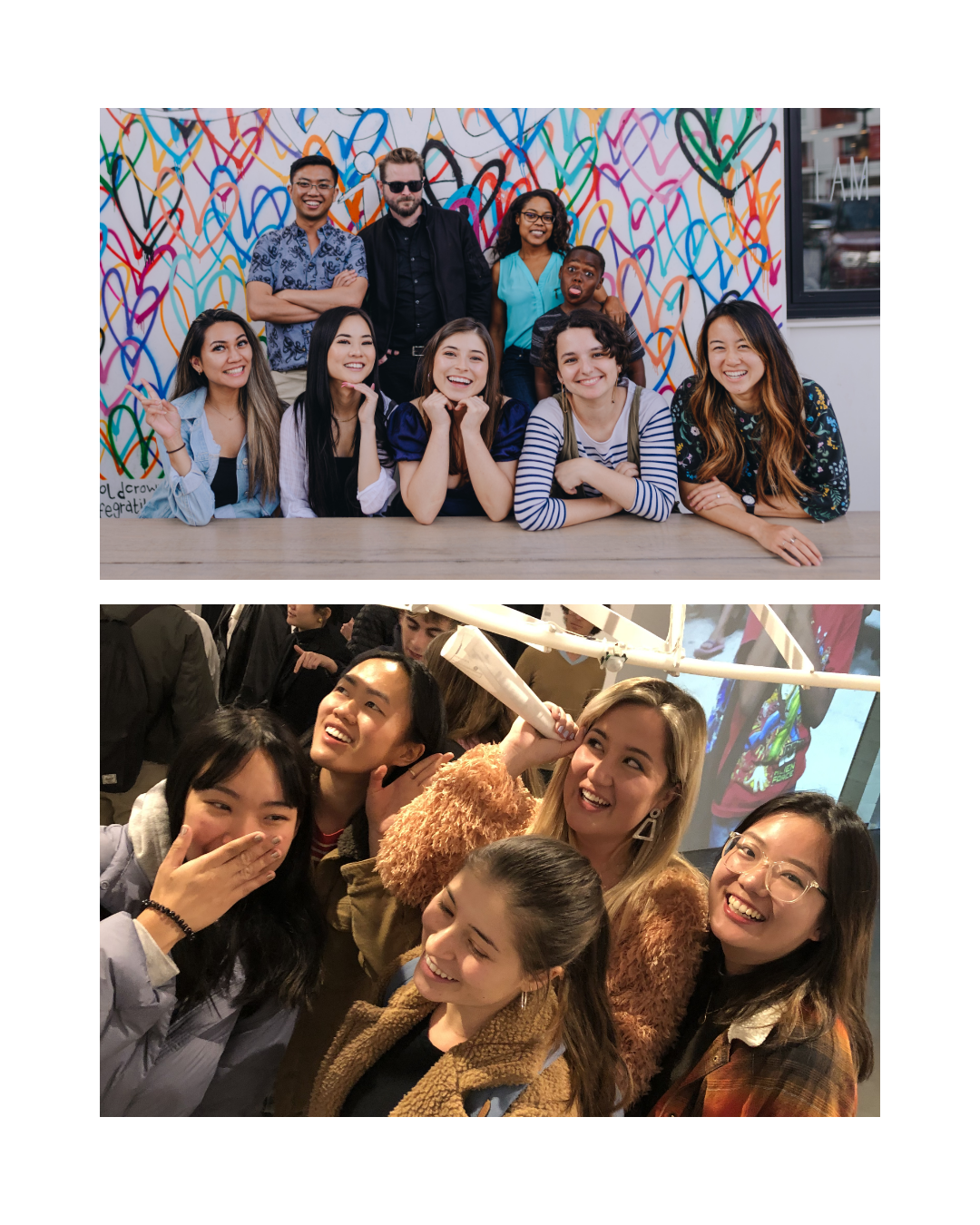
Double Major
A Design Studio for UCLA Student Affairs
The Brief
Build a UCLA student creative team that supports the communication needs for multiple departments and develops rising talent for a future career in graphic design.
The Outcome
Eight (8) ACUHO-I Marketing Awards, four (4) conference presentations, and successful job placements at UCLA and beyond.
The Team
Paul Mendoza, Founder and Program Director
Jessica Borchardt, Rachel Tu, Esther Abosch, Vanessa Codilla, Hannah Park, Kiana Abad, Muling Shi, Ainsleigh Douglas, and Becca Cheung, Marketing Designers
Jesse Herring, Candice Lawson, Matthew Geddert, Danny Slatkin, and Lori Vogelgesang, Program Advisors
My Roles
Creative Direction, Art Direction, Project Management, Talent Recruitment, Communication Design, Career Development.
01 :: Draft the Agreement
A new home for creative talent at UCLA.
Double Major is the UCLA design team I managed from 2018 to 2020. An all-female, majority-POC team, Double Major served multiple UCLA departments including Housing Services, Student Affairs, and Strategic Communications.
Recruitment for the first year was fairly straightforward, as I'd worked with all the students before on a different team. To recruit for Year 2, I built a look and feel that lived on the edges of UCLA’s brand style guide with a mark that asserted design’s value as creative currency.
I named the team Double Major to broadcast its higher-ed roots to the world, and to also comment on the fact that we combine design with other disciplines in our work: architecture, science, creative writing, and so on.
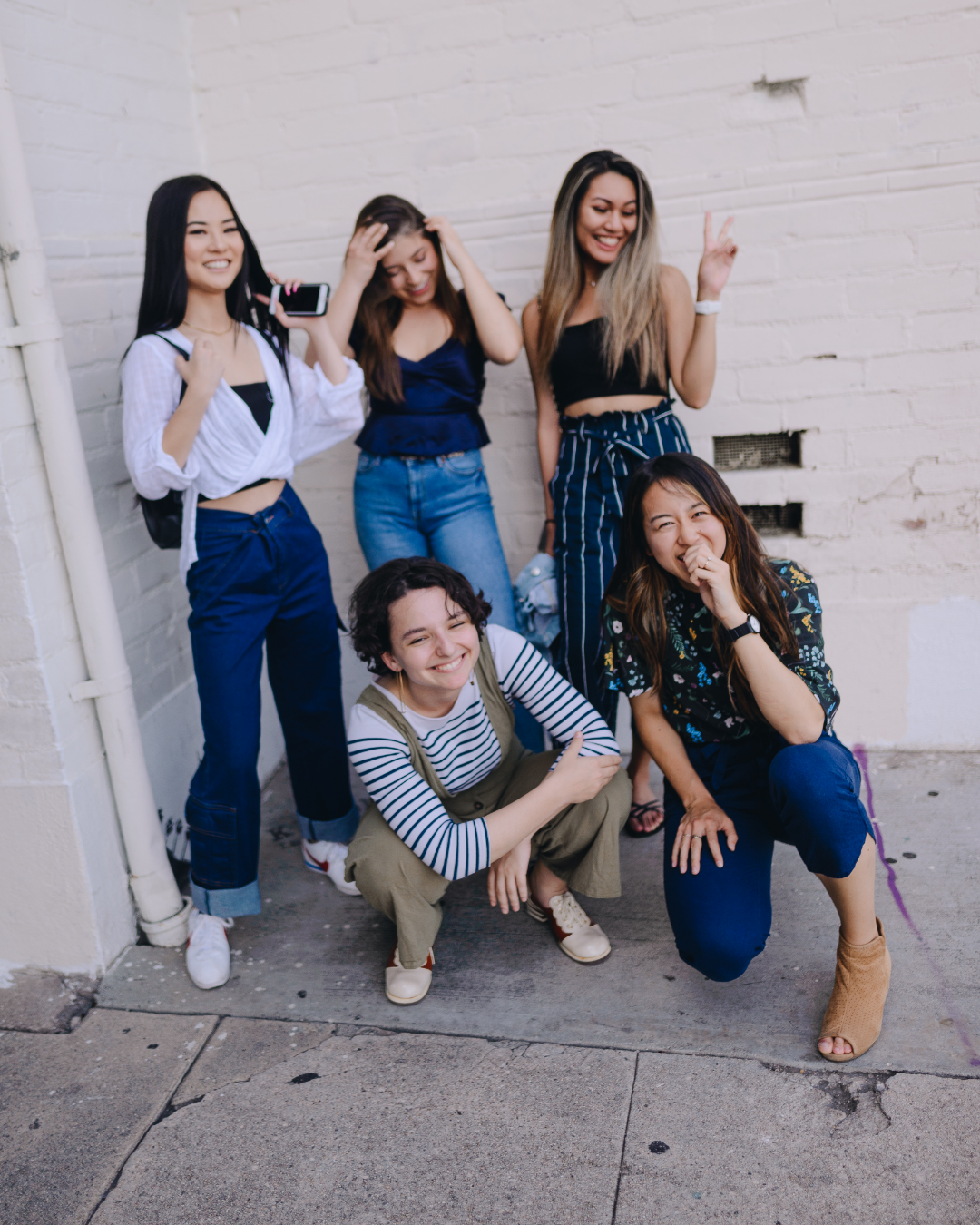
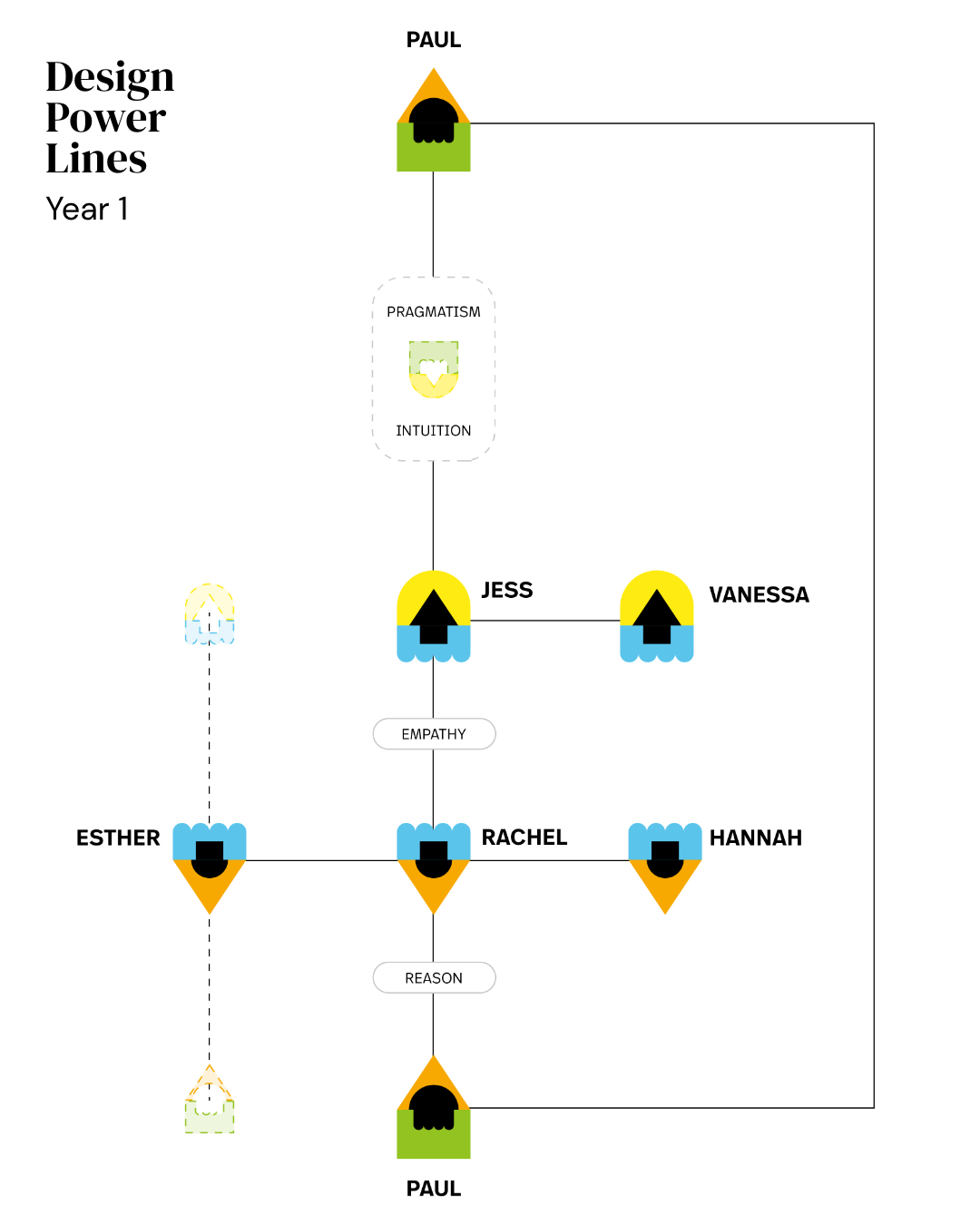

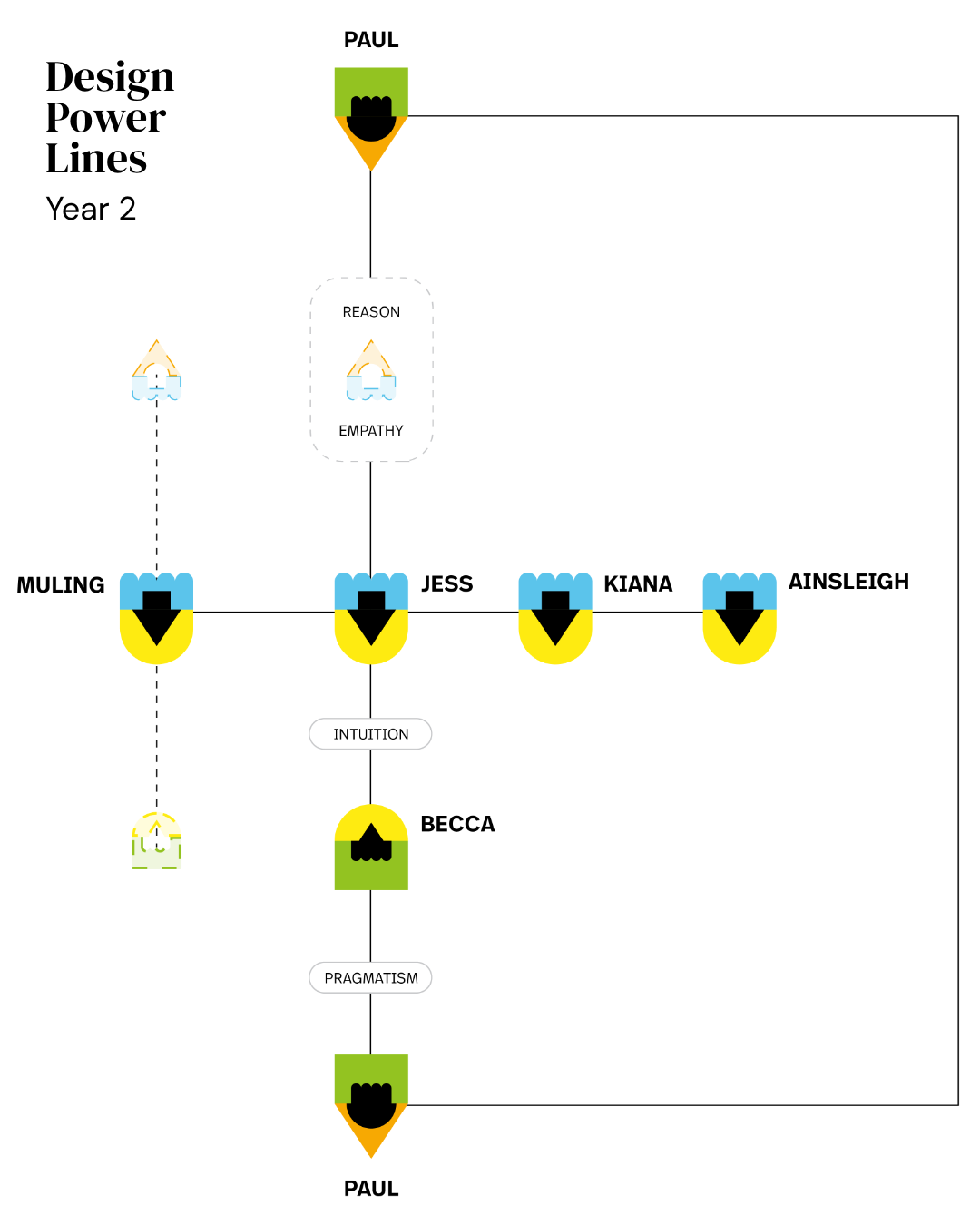
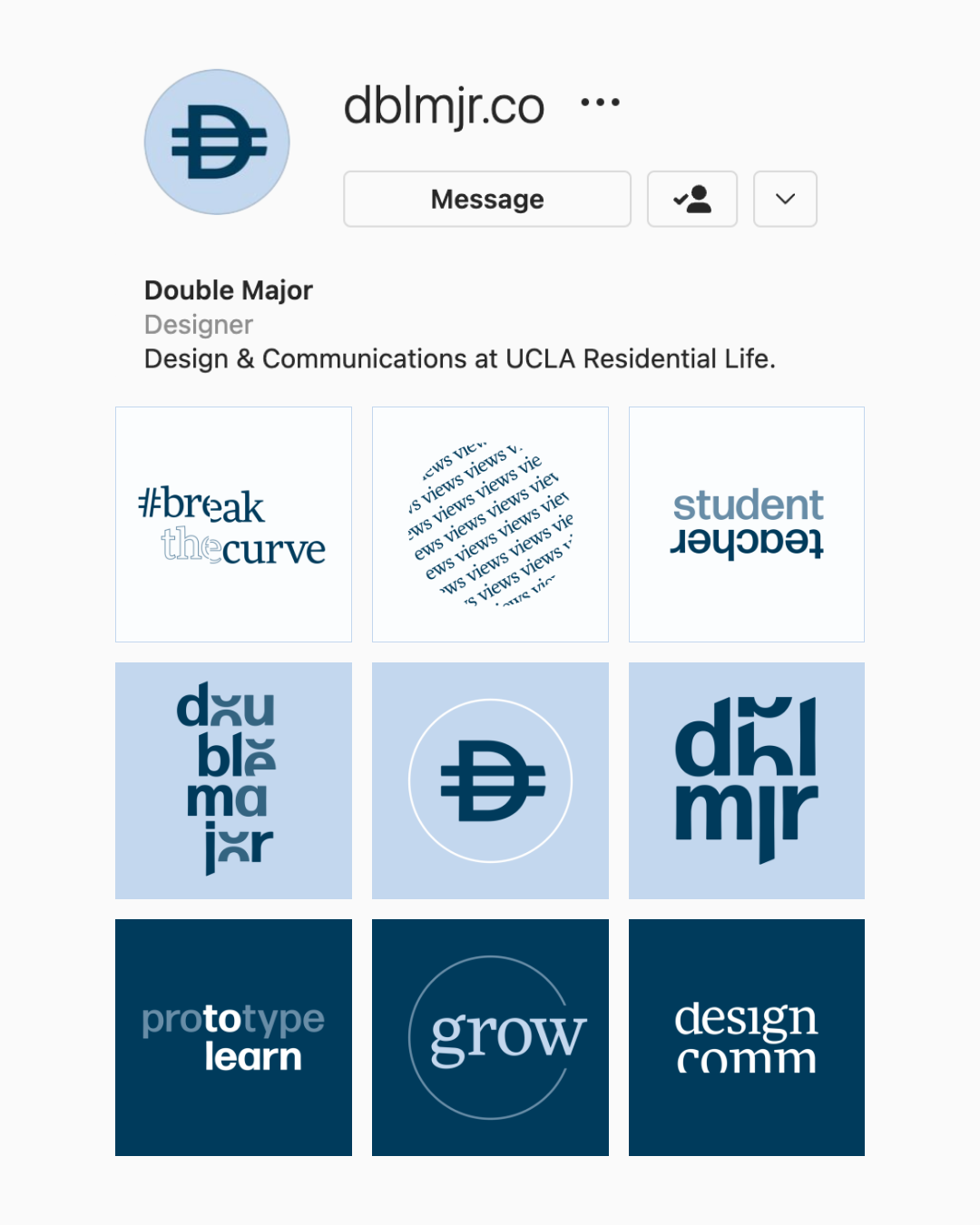
02 :: Discover the Opportunity
The hidden costs of in-house design.
As the first dedicated designer hired by UCLA Residential Life, I started by investigating UCLA’s social media landscape to scope out potential creative partnerships on campus. I also connected with Student Affairs leaders and event producers to figure out their needs.
I found a skills gap in the student-facing cost centers at UCLA, where money is spent and not explicitly earned. This leads to survival tactics and a lack of resources, which is why UCLA is so heavily reliant on its students to get day-to-day communications work done.
To expand stakeholders’ imaginations, I looked at student-driven agencies at other universities as well as student development programs at major firms and industry organizations to see what could be replicated.
Finally, I interviewed student creatives on other UCLA teams to find out what their challenges were and what they hoped to achieve through their on-campus employment.
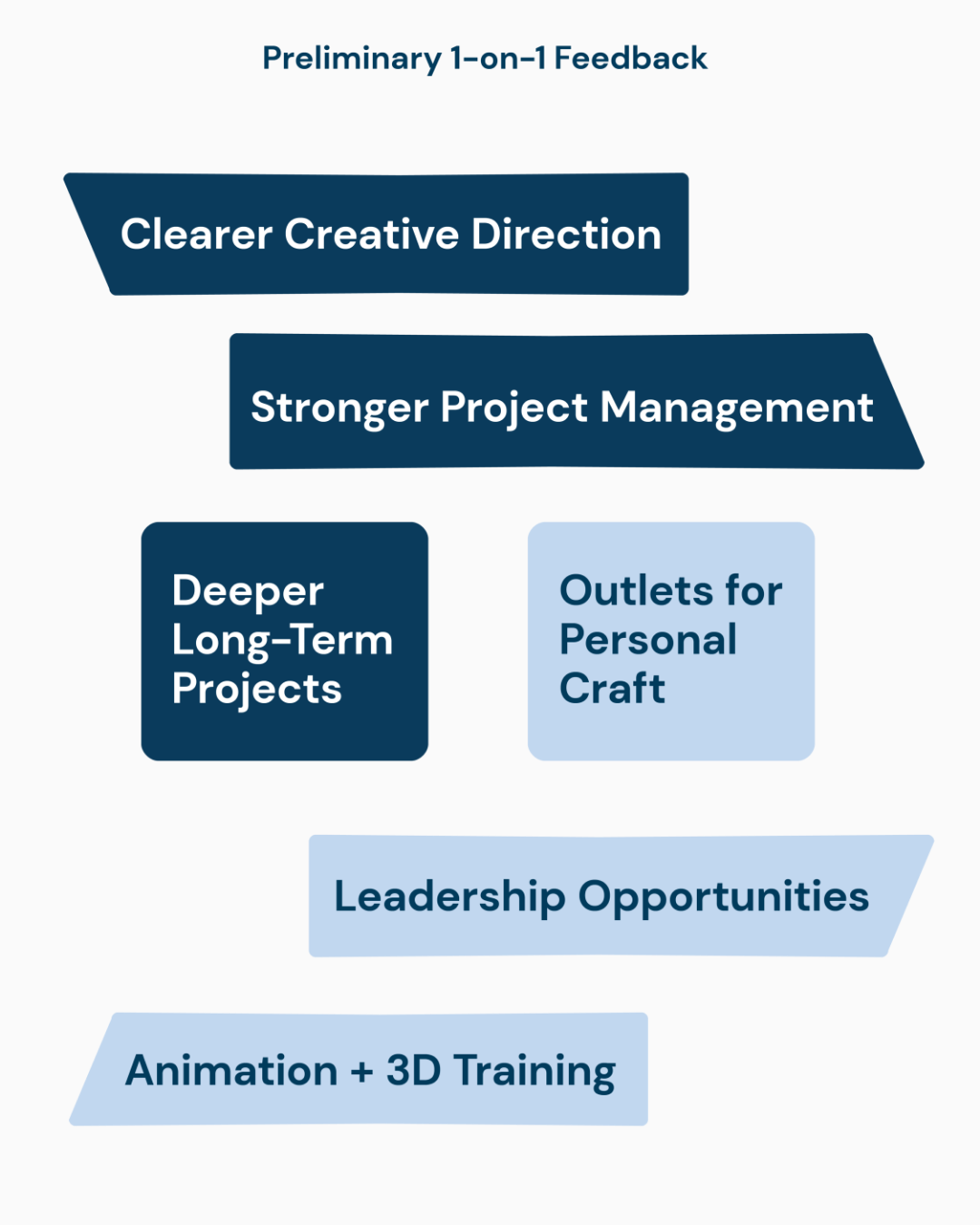
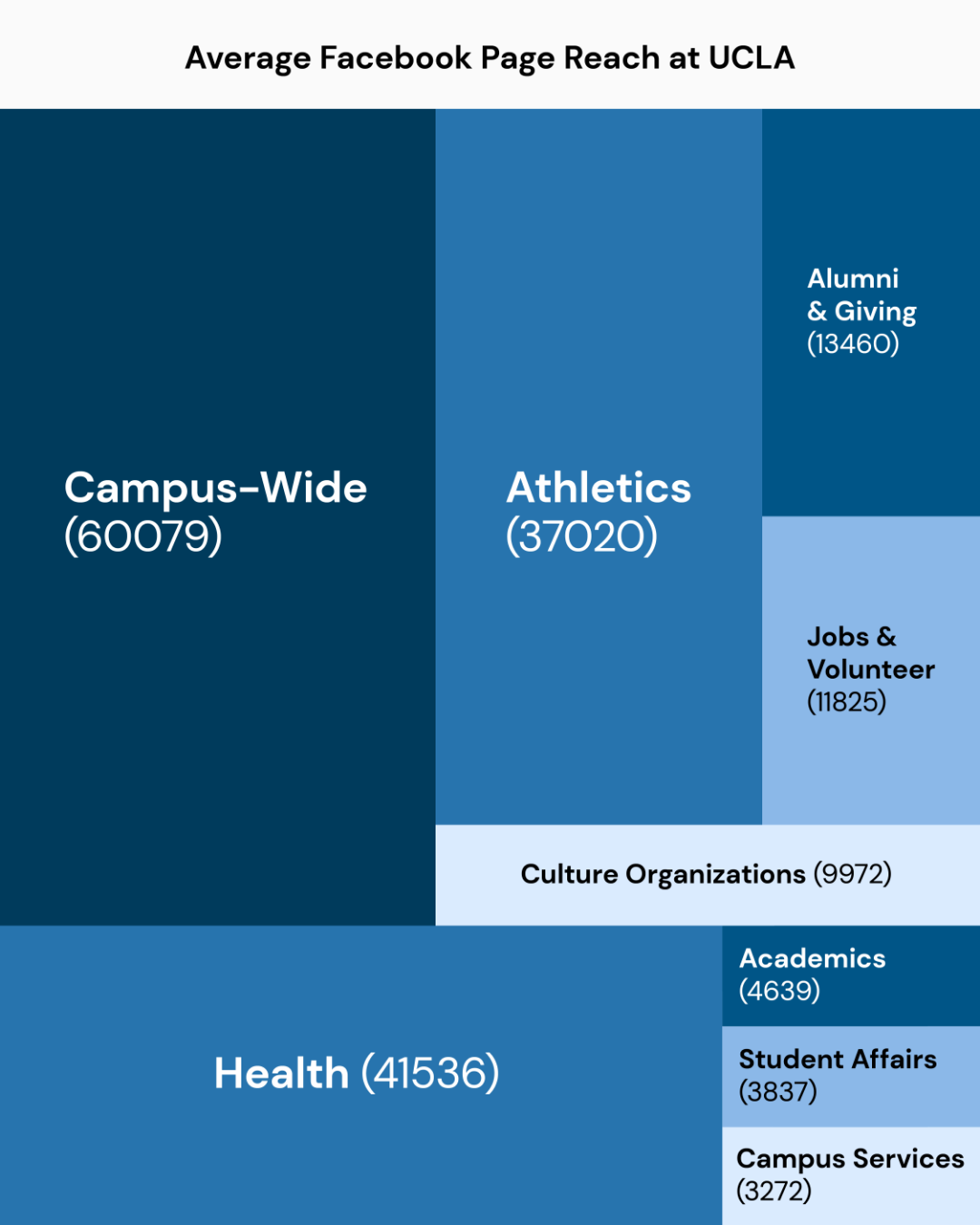
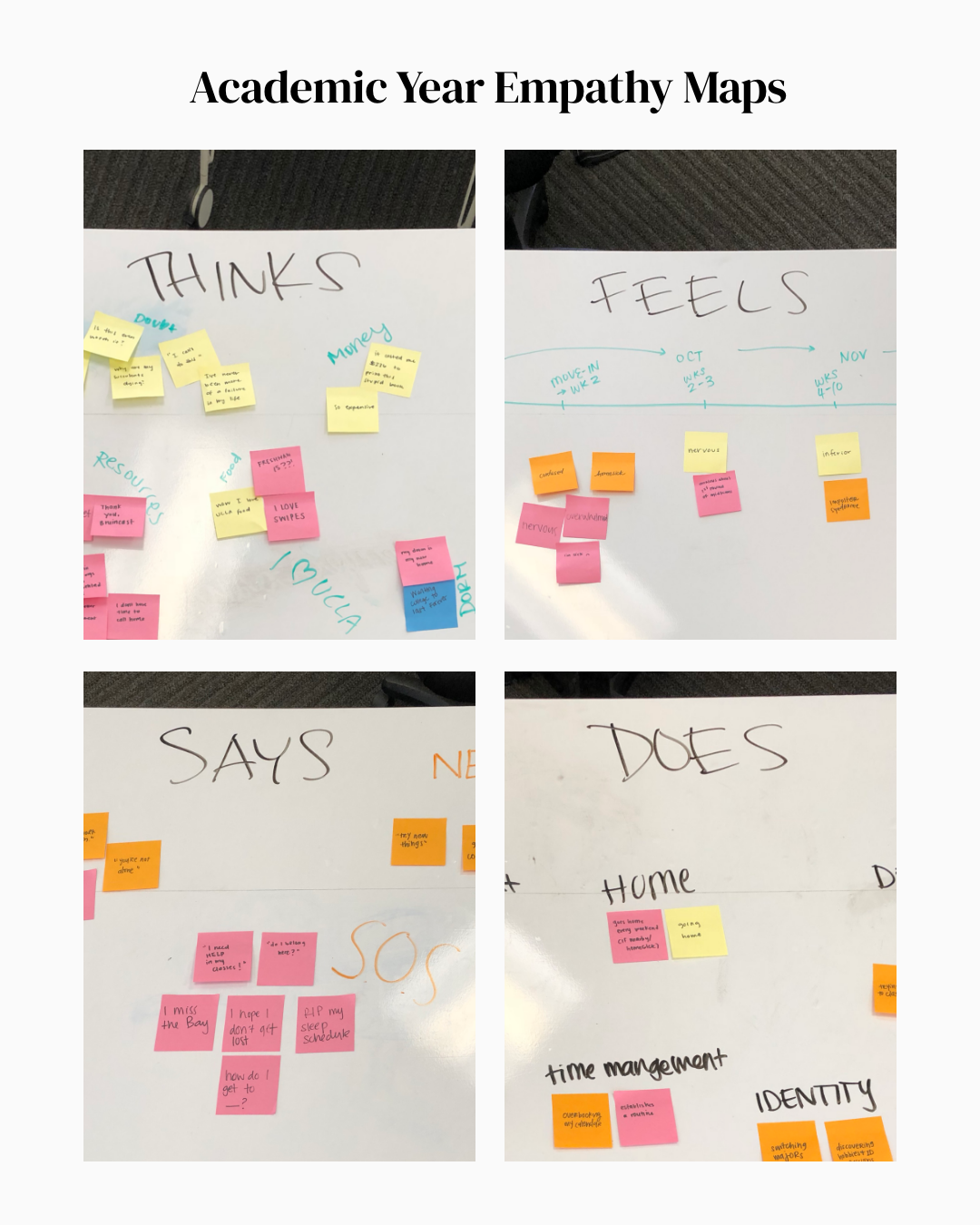
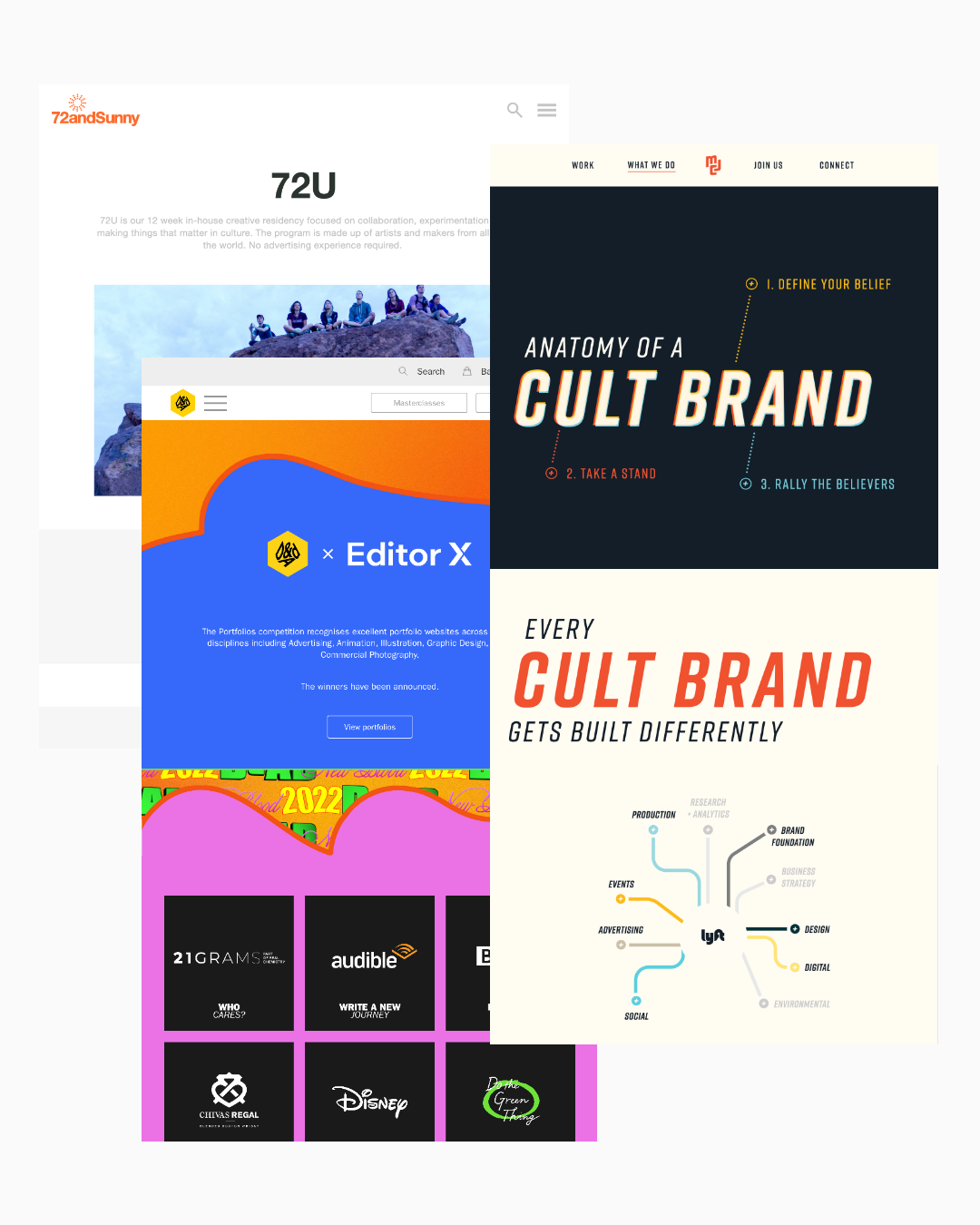
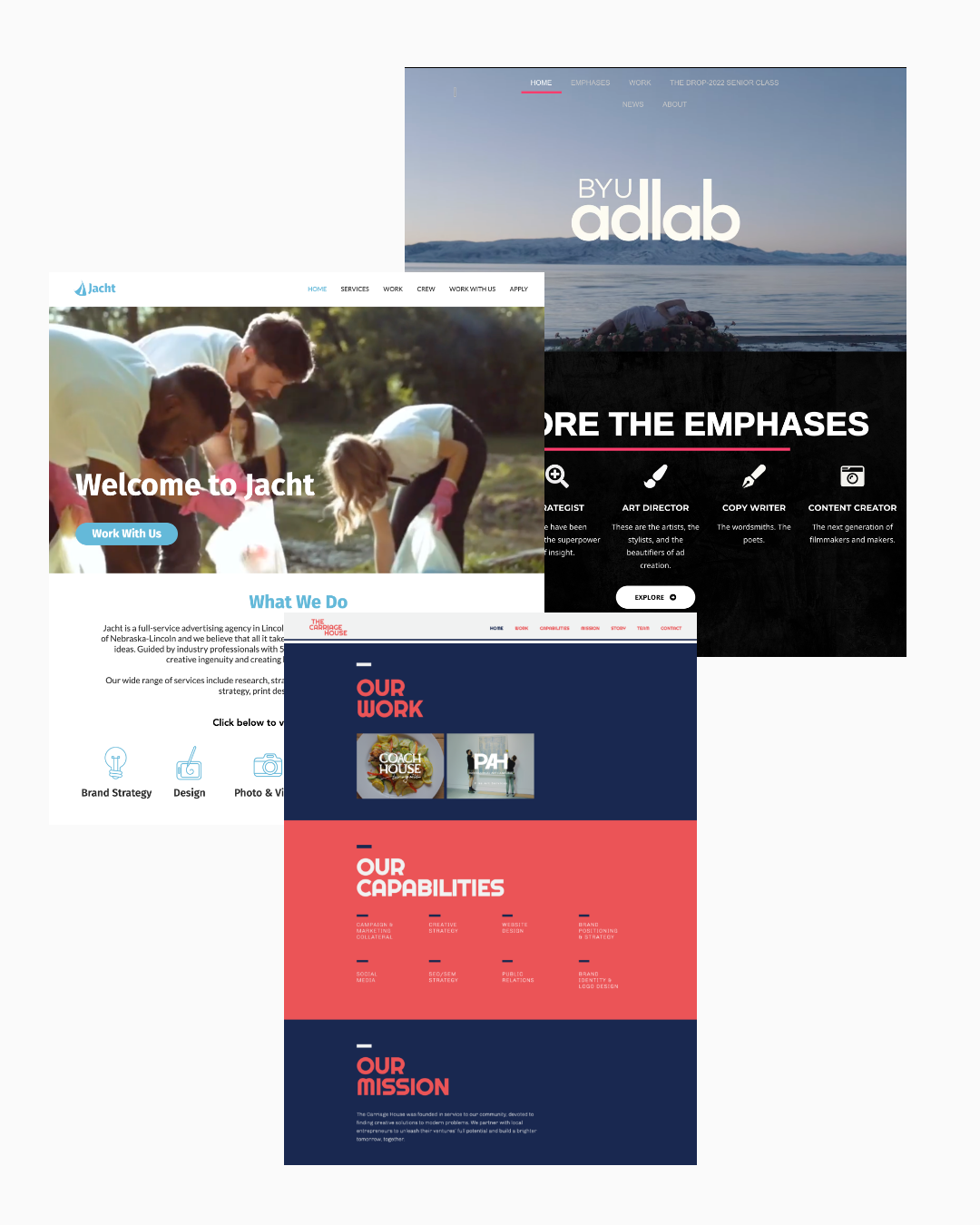
03 :: Define the Strategy
Faster, higher, stronger.
Something that struck me about both my Year 1 and Year 2 teams is their commitment to fitness: yoga, cross country, track & field, and even synchronized swimming.
What if the competitive spark that fueled their athletic disciplines could also inform their development as creative talents and future design leaders?
My organizational strategy was to approach the work like an Olympic decathlon, with each event training up my team members to be a well-rounded design athlete who could perform well on long-running projects. No more running laps for laps’ sake; I wanted to take my team to the podium.
This approach gave way to the “DNA” framework that served as our team’s north stars, and instead of looking to traditional management playbooks, I took my cues from sports psychology with heavy inspiration from the best couple ever to appear on TV: Coach Taylor and Tami Taylor from Friday Night Lights.

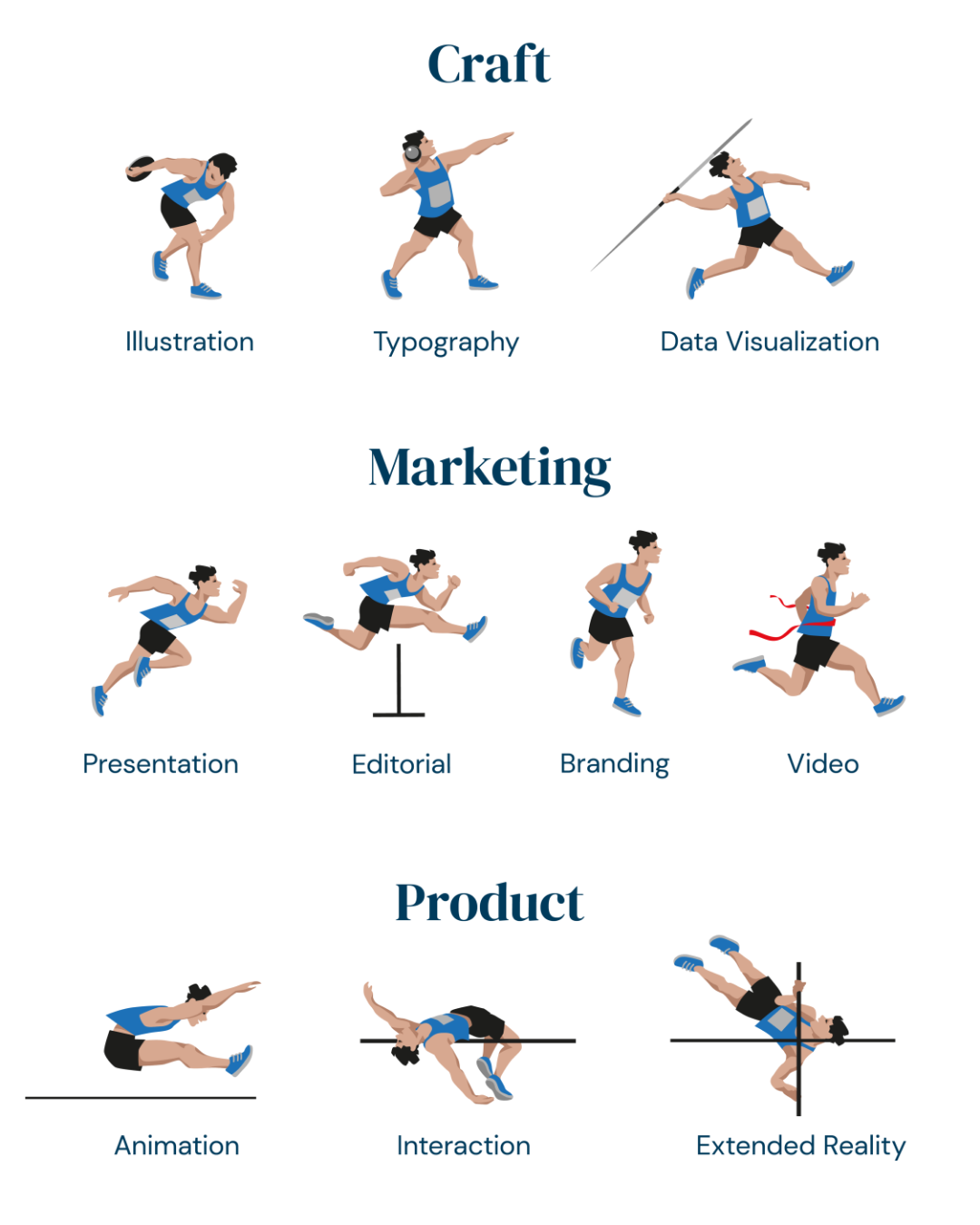
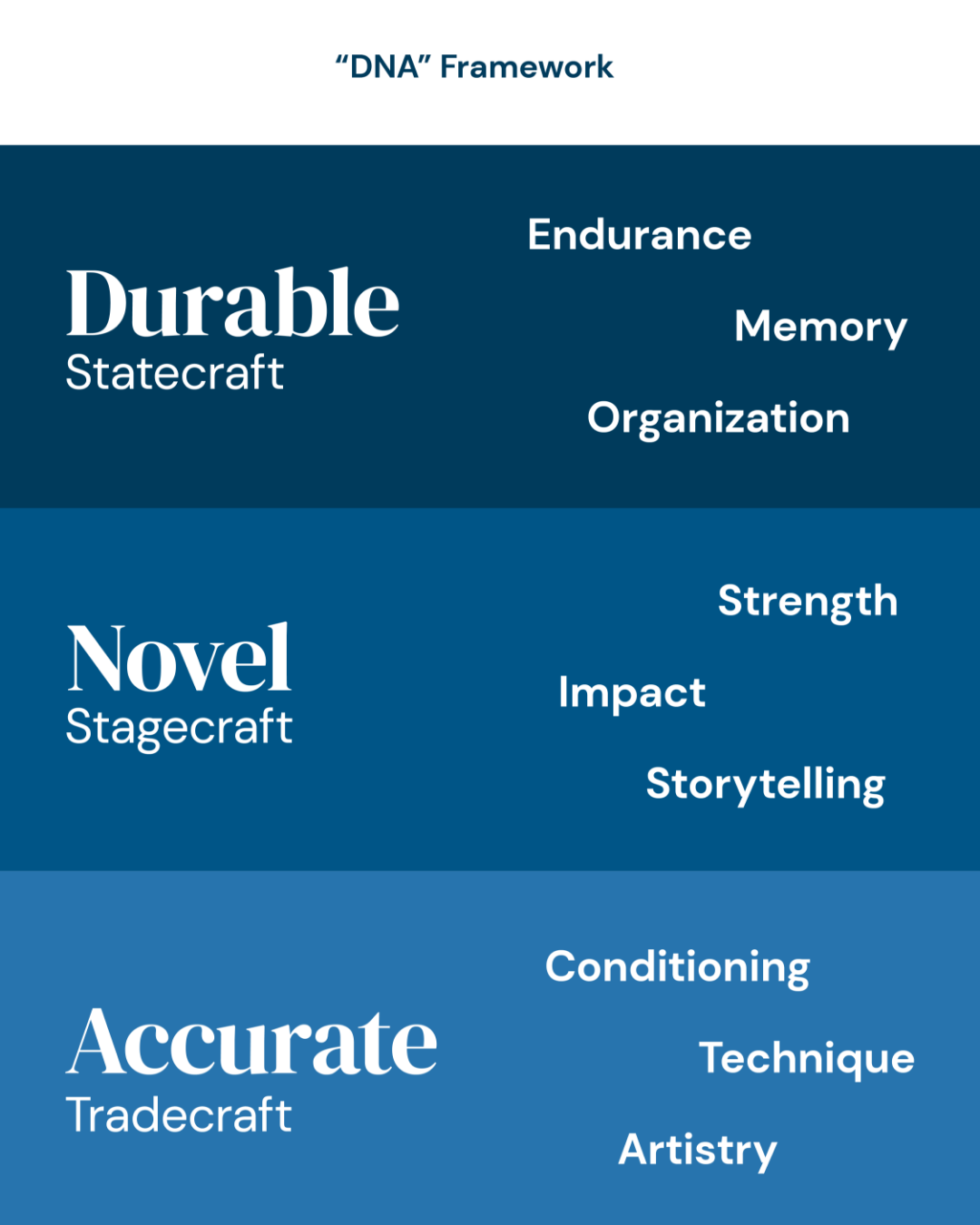
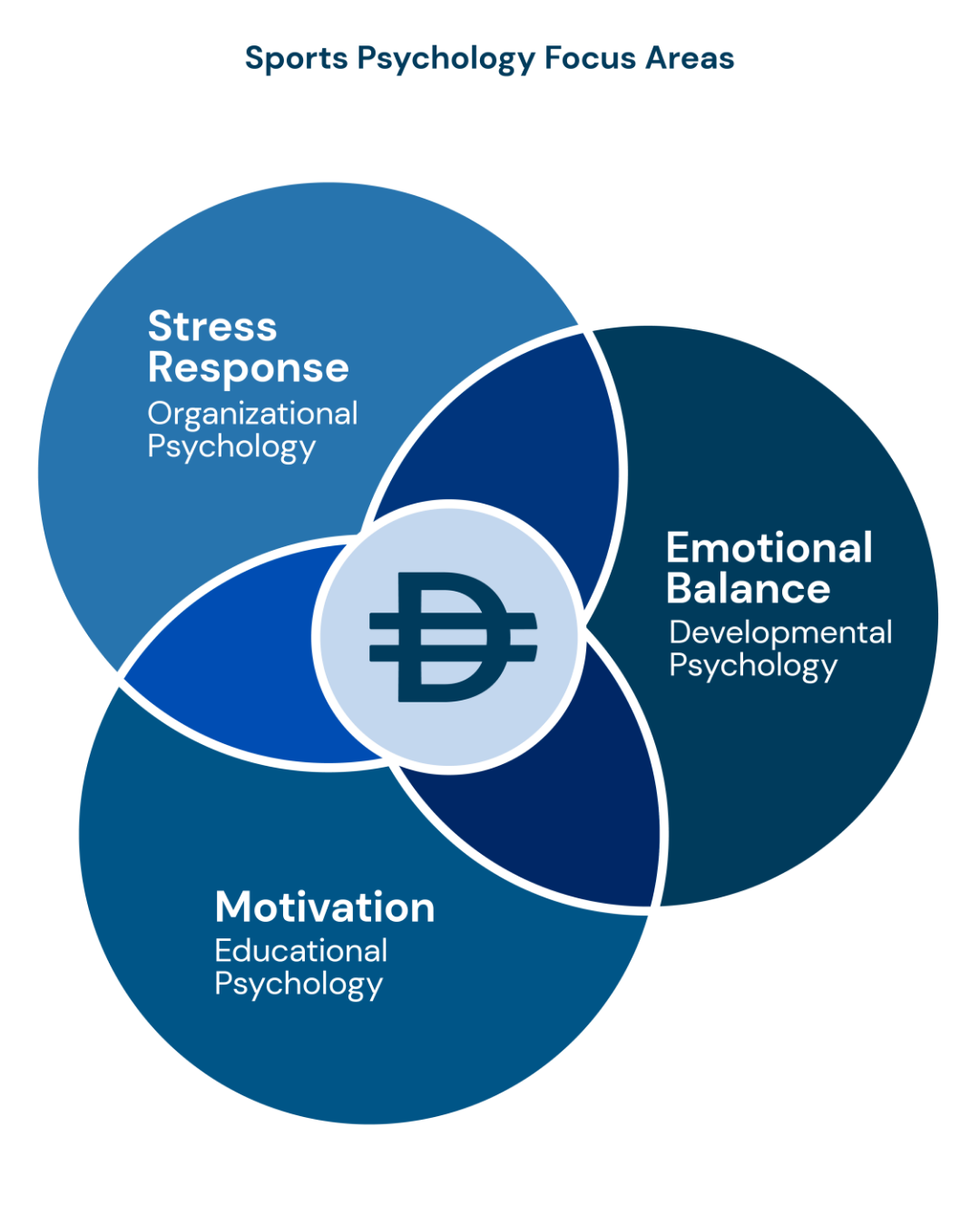
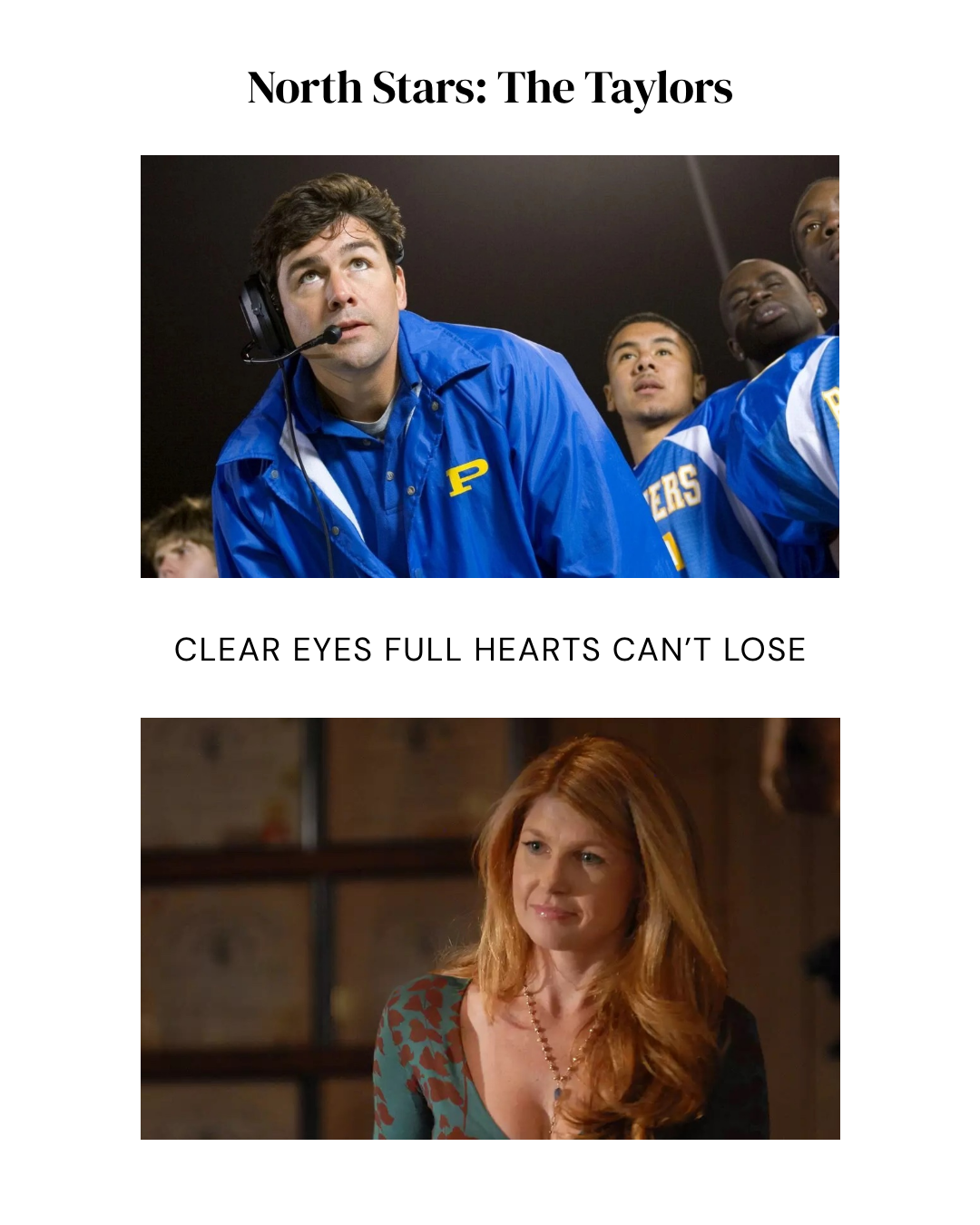
04 :: Develop the Prototypes
Let the games begin.
The decathlon strategy paved the way for lots of managerial experimentation. Once I had major projects scoped out for the full academic year, I outlined the developmental path for each student and rotated them through each “event.”
To build stronger cross-campus partnerships, I set up our Winter Quarter work to be compatible with the upper-division internship programs at Design Media Arts, Digital Humanities, Environmental Science, and Communications. My teams wouldn’t just be earning money; they would also be earning credit.
For good team hygiene, I created one major training camp per quarter: Pre-Req, Fun Lab, and The All-Nighter. These were rounded out by attending one big local conference: Adobe MAX. (It pays to go to school in LA!)
And to track our creative progress from week to week, I adapted an exercise from Kim Scott’s Radical Candor to form our “Top Dog & Fail Whale” ritual, to celebrate our wins and normalize the humanity of our mistakes.
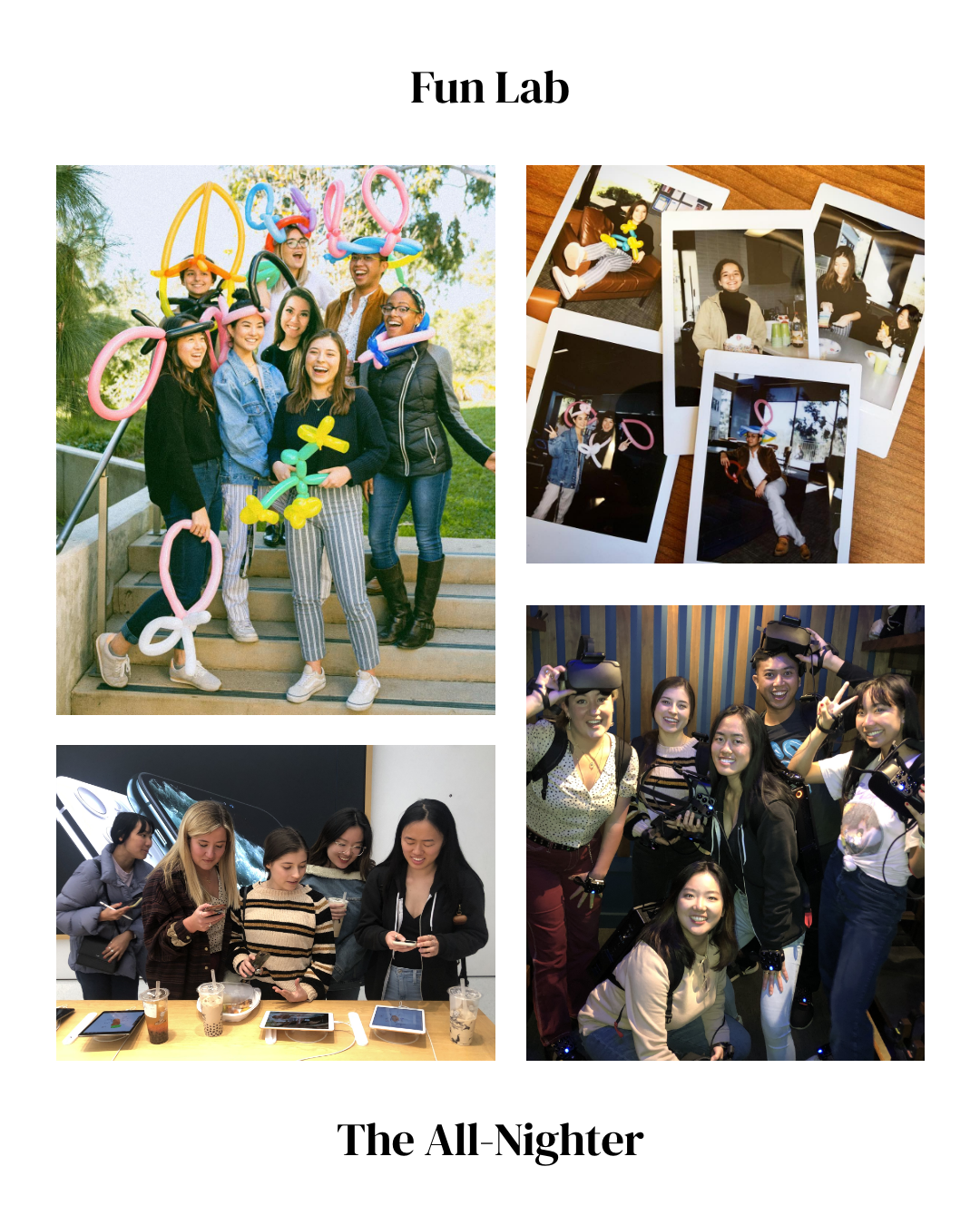

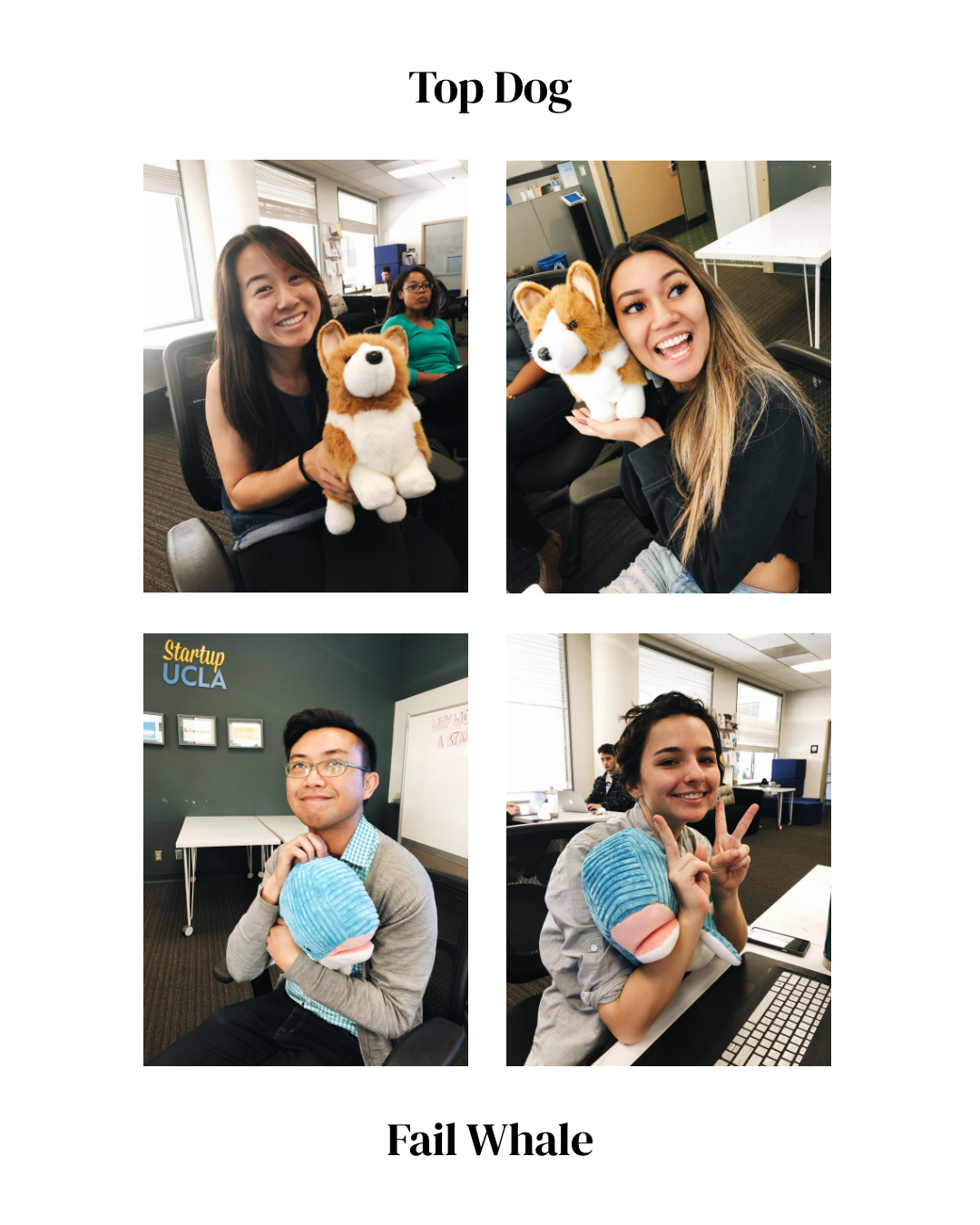
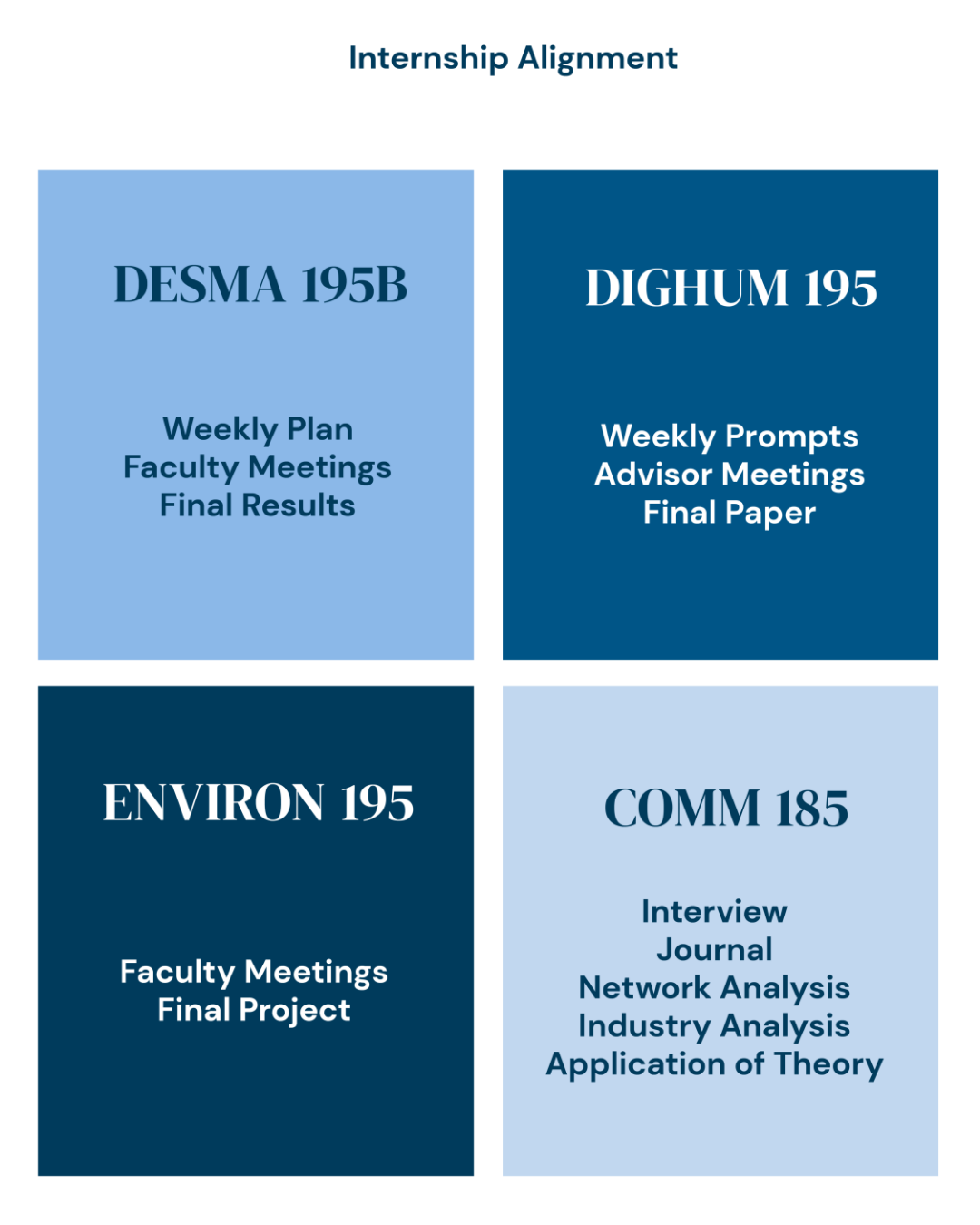
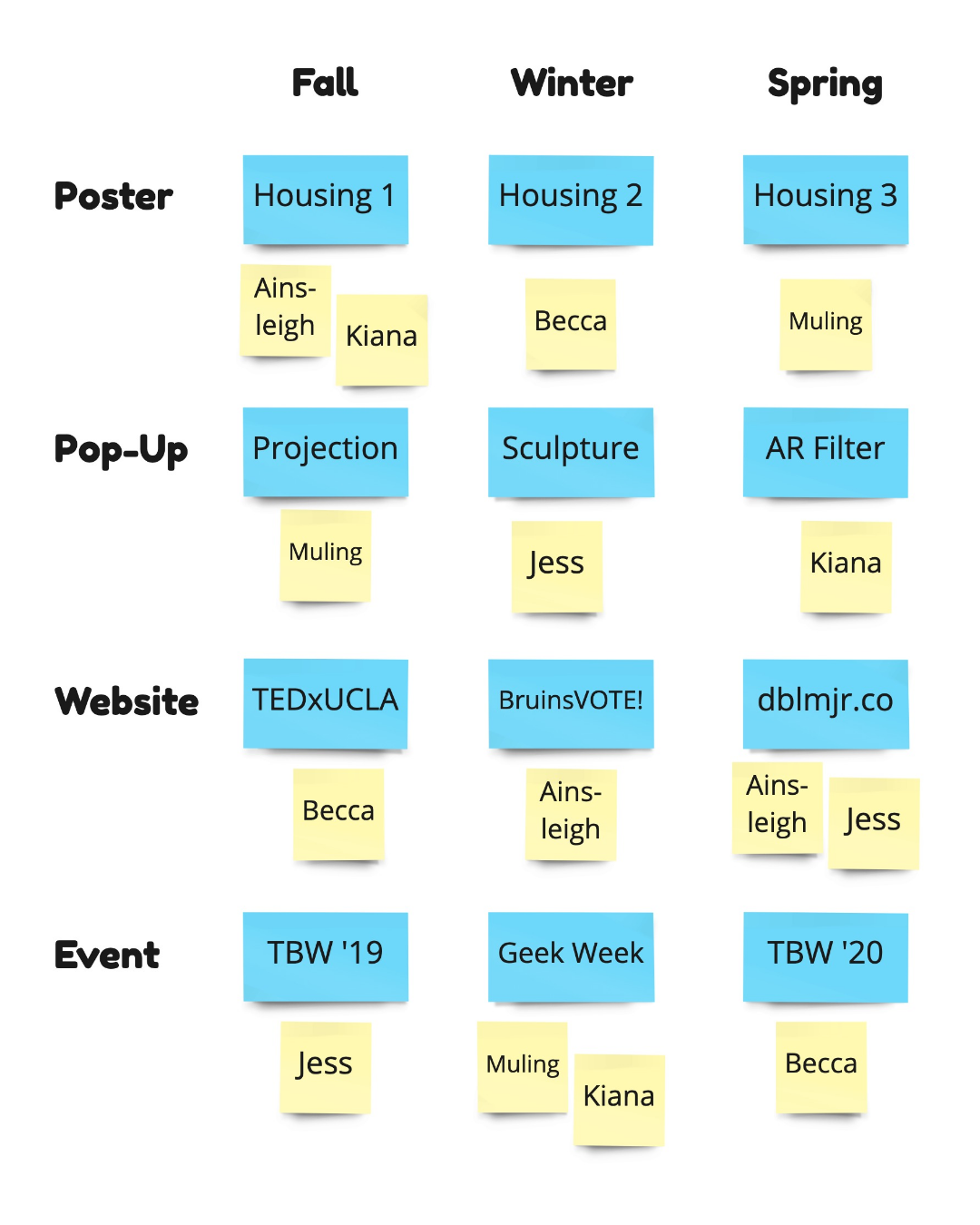
05 :: Deliver the Results
Bring the heat.
To exercise pure design craft—our “throwing” events—we put illustration and typesetting out front in our printed A2 wall calendars, a team favorite.
For our products and experiences—our “jumping” events— we flipped our Art in Light public installations into three different mediums, and we also combined Snap Lenses with animated backgrounds to make a one-of-a-kind Zoom AR experience for the pandemic era.
And for our marketing efforts—our “running” events—we built brand systems for BruinsVOTE!, Rate the Hill, Geek Week, and True Bruin Welcome, and we also produced our most ambitious project: a series of 20 videos for UCLA’s all-virtual New Student Orientation.

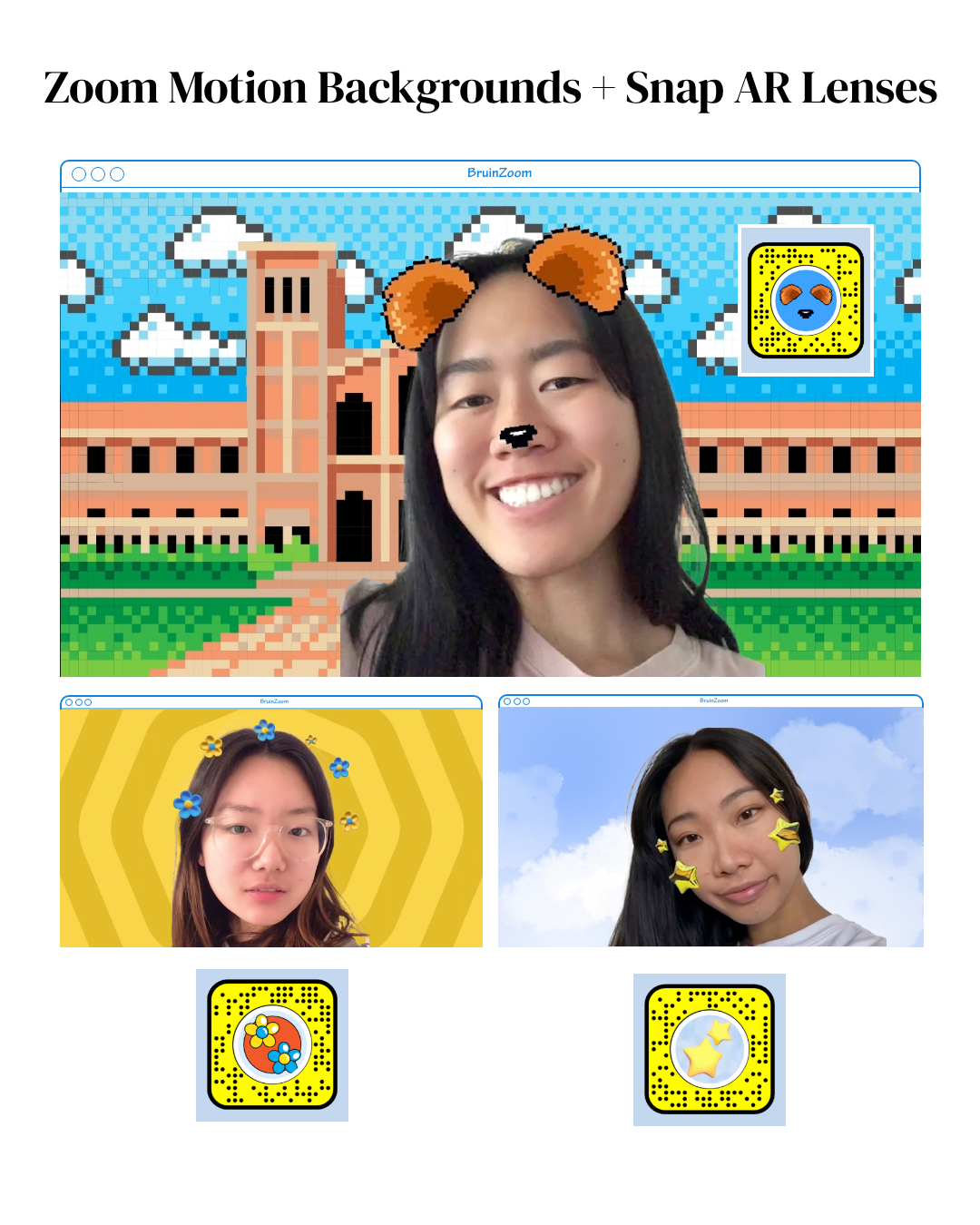
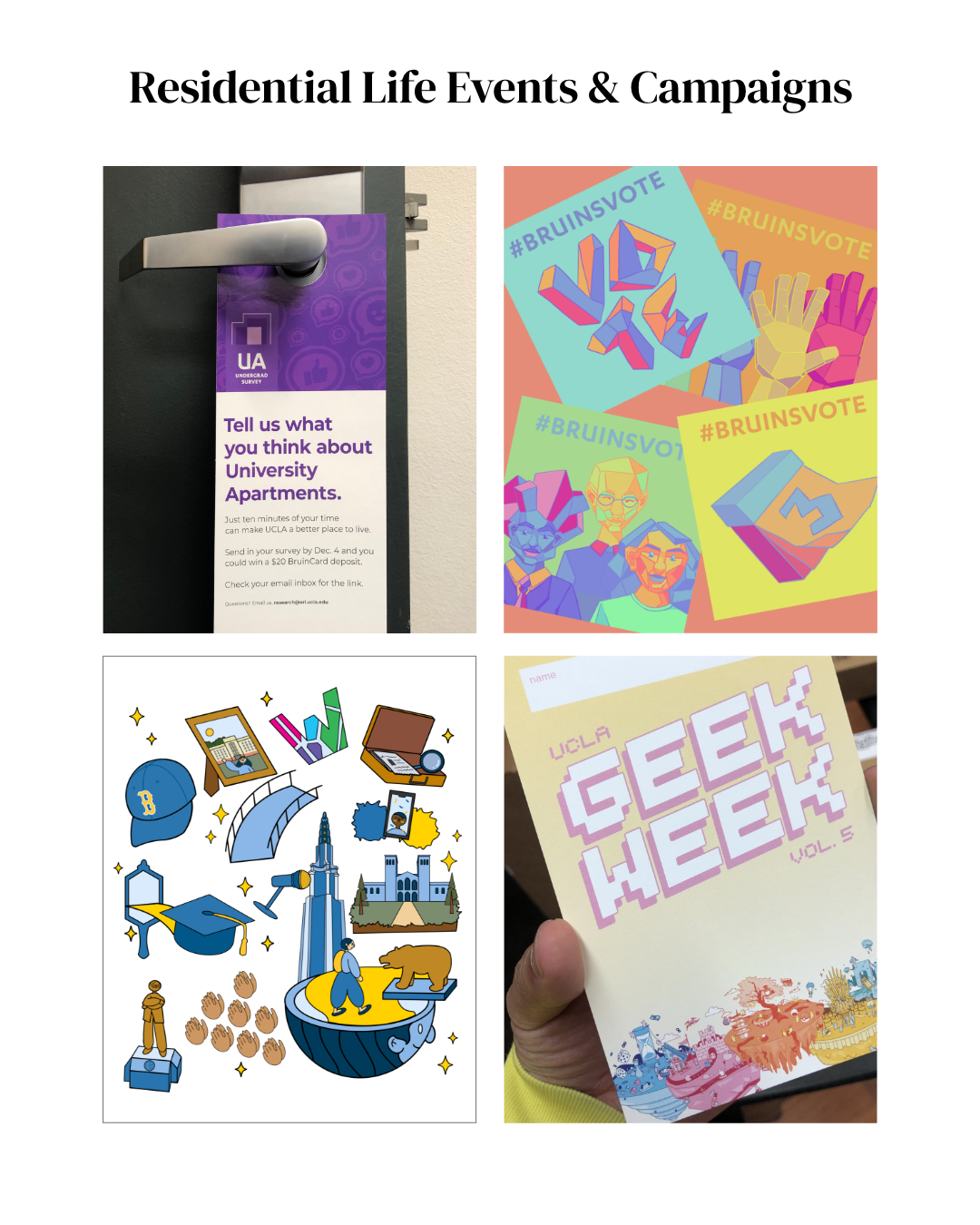

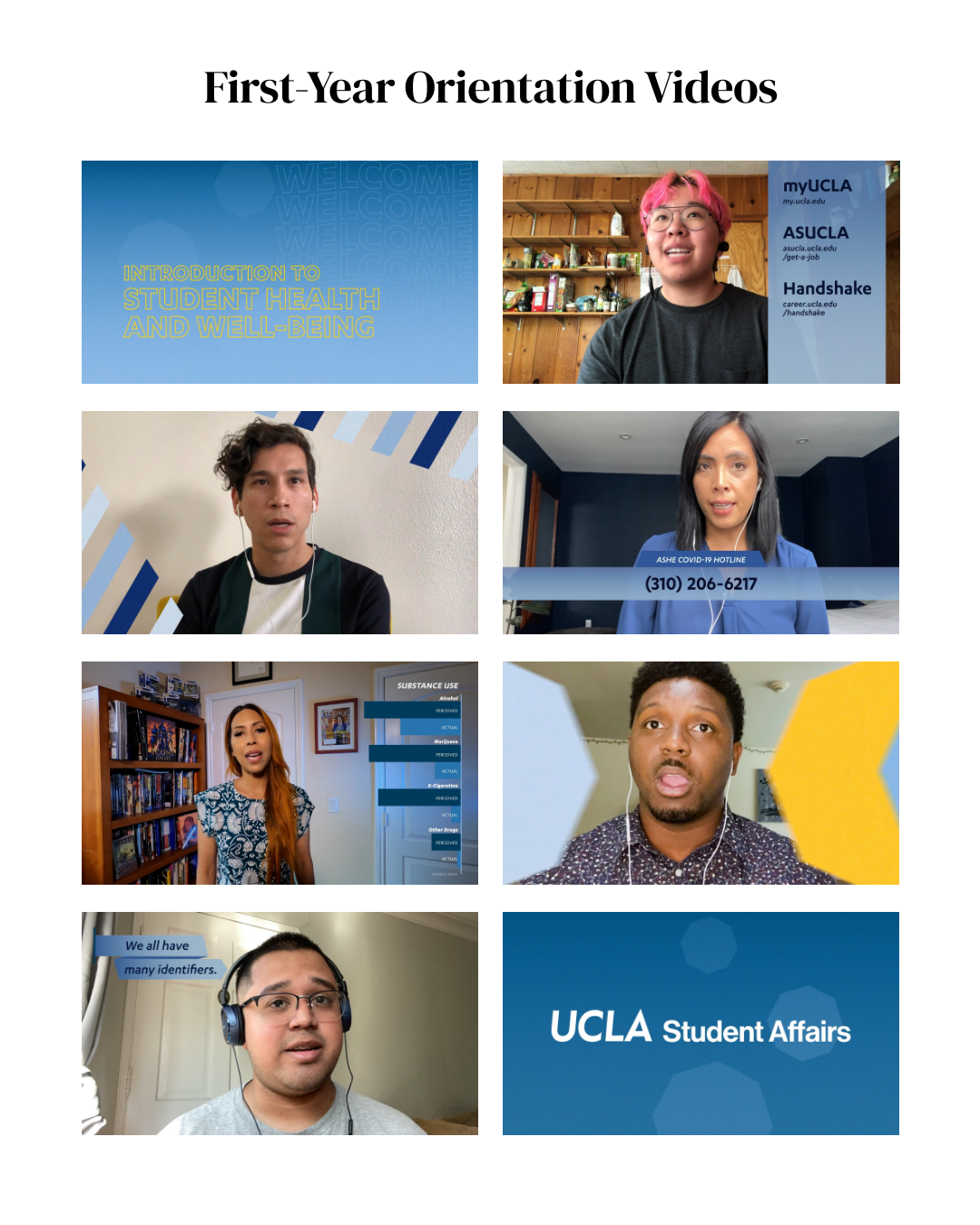
06 :: Debrief the Milestones
Our personal bests.
Double Major aimed for the podium, and we arrived in style. We won a total of eight ACUHO-I Marketing Awards, hanging tough with in-house teams that were twice our size and had twice the money.
Double Major became a successful student worker pipeline to other departments like Samueli Engineering, Game Lab, and Strategic Communications.
Best of all, I set working-hour benchmarks for what my Student Affairs colleagues could reasonably expect from a student-led project. I brought my colleagues closer to understanding how long creative projects take, and why.
I’ll always be proud of these women: Jess, Rachel, Vanessa, Esther, Hannah, Kiana, Muling, Ainsleigh, and Becca. We were a fabulous team. A perfect ten.
